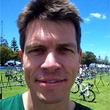This course is completely lab-based. There are no lectures or required reading sections. All of the learning content that you will need is embedded directly into the labs, right where and when you need it. Introductions to tools and technologies, references to additional content, video demonstrations, and code explanations are all built into the labs.
Some assessment questions will be presented during the labs. These questions will help you to prepare for the final assessment.
The course includes four modules, each of which contains two or more lab activities. The lab outline is provided below.
Module 1:IoT Analytics and Cold Storage
- Lab 1:Configuring the Wind Farm Simulator
- Lab 2:Getting Started with Data Lake Storage and Analytics
Module 2:Warm Storage
- Lab 1:Getting Started with Warm Storage
- Lab 2:Implementing Business System Integration
Module 3:Analytics on the Edge
- Lab 1:Getting Started with IoT Edge
- Lab 2:Implementing Analytics on the Edge
- Lab 3:Deploying an Azure Function to the IoT Edge
Module 4:Advanced Analytics
- Lab 1:Constructing Analytics Queries
- Lab 2:Managing Analytics Topologies
- Lab 3:Device Management and Analytics


